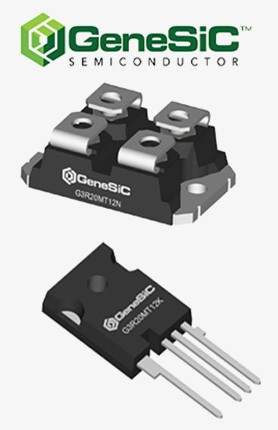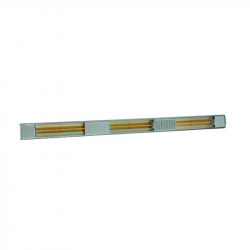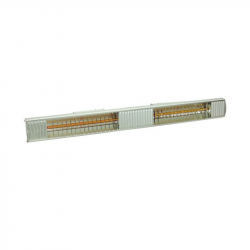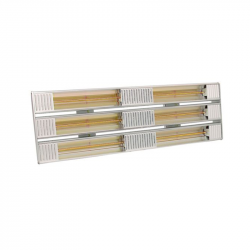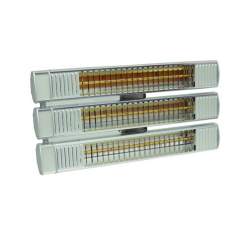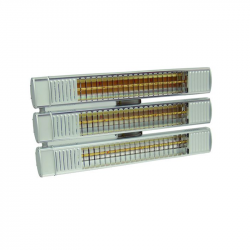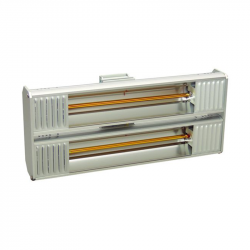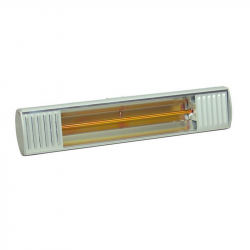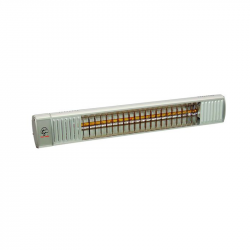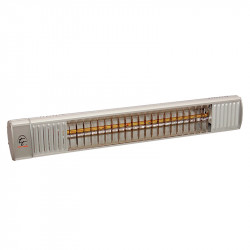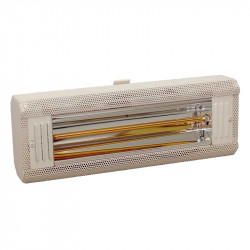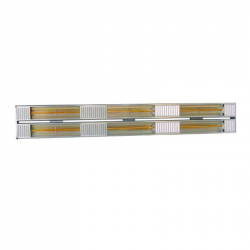Equipment for industrial objects heating (Heat Reflectors)
Categories
Modern technologies for heating and industrial processes: IR and UV emitters
In the context of increasing demands for energy efficiency and process quality, traditional methods of heating industrial facilities often prove insufficient. Modern industry is increasingly turning to specialized sources of electromagnetic radiation – infrared (IR) emitters and ultraviolet (UV) emitters, which offer precise and economical solutions for thermal management and sterilization.
Infrared (IR) emitters as a heat reflector
Infrared emitters, often referred to in the industrial context as a heat reflector, represent a revolution in heating large spaces such as production halls, warehouses, and workshops. Instead of heating the entire volume of air, which generates large losses in high facilities, IR radiation works on the principle of heat waves, directly heating people, machines, and floors.
Key advantages of IR emitters in industrial applications:
- Minimal thermal inertia – the radiation reaches full power immediately after switching on, offering instant heat.
- Energy efficiency – heat is directed precisely where it is needed, which is particularly valuable for zone heating or individual workstations.
- Comfort and hygiene – the lack of air convection eliminates the problem of dust and contaminant dispersion, and also limits unpleasant drafts.
Heat reflectors - heating industrial facilities and technological processes
Infrared emitters, especially those with high efficiency and low inertia (often made in the form of a quartz tube with a tungsten filament), are also widely used in technological processes. Their ability to quickly and deeply heat materials is invaluable in many industries.
Examples of industrial applications of IR emitters:
- Drying paints, lacquers, and protective coatings in paint shops and dye houses.
- Drying materials in the wood and paper industries.
- Maintaining a constant temperature in production processes.
- Heating and defrosting in the food industry.
Ultraviolet (UV) emitters: sterilization and curing
Although UV emitters are not heating devices, they play a critical role in industrial quality control and hygiene systems. They emit UV-C radiation, which has powerful germicidal properties, destroying the DNA structure of microorganisms.
Main functions of UV emitters in industrial facilities:
- Disinfection of surfaces, air, and liquids – crucial in the pharmaceutical, food, and medical industries to ensure sterile production conditions.
- Water treatment – effective and chemical-free removal of bacteria and viruses from process and drinking water.
- Polymerization and curing – in printing, for rapid curing of UV lacquers and inks, and also in the electronics industry.
Safety and the future of radiation-based solutions
Both IR and UV emitters are precise tools that require proper installation and operation. In the case of IR, attention should be paid to the wavelength to avoid potential hazards (e.g., to the eyes from short-wave IR-A radiation). UV-C emitters, due to their germicidal action, must be used under controlled conditions, with appropriate safeguards protecting workers from direct exposure.
These advanced technologies represent the future of thermal energy management and hygiene in industry, offering savings, high efficiency, and the ability to precisely adapt to the specifics of any production process.

